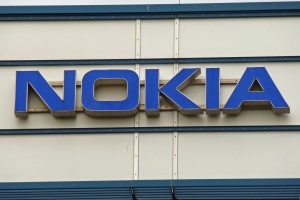With telcos facing a world recession, and consumers and business users now looking to cut their connectivity costs post-pandemic, virtual and shared infrastructure is set to help CSPs (communications service providers) ride the storm. Business technology journalist Antony Savvas looks at some solutions available.
5G core
Nokia has unveiled its Core SaaS for 5G to provide CSPs and enterprises the option of running the heart of their network through a “flexible, fully automated and scalable” software model. It says the technology will enable “greater business agility” and “faster time to value” for delivering monetised network services.

Nokia Core SaaS allows operators to move away from the legacy practice of deploying customised software that runs on private infrastructure, and to consume Nokia’s Core software, including 5G Packet Core, on-demand through a “more cost-effective” subscription service. It promises to eliminate large up-front capital expenditure, and avoid the need to perform on-site software maintenance and updates.
No doubt, many telcos, who have already gone to the expense of doing things the old way to run their first 5G services, will be asking why this option wasn’t available sooner? Then again, many of the first wave of 5G services haven’t been “standalone”, and have instead been a mixture of 4G and 5G systems, so certainly all is not lost with Nokia’s offering.
Trials are expected to commence “shortly”, and commercial availability is expected in the “first half of 2023”, says Nokia.
Roberto Kompany, principal analyst for service provider networks at Omdia, says: “As telecom SaaS goes more mainstream, we are seeing more solutions offered in the marketplace that provide operators with much needed options for getting the most out of the network.
“Nokia’s Core SaaS offering through a subscription model is a new dimension to telecom SaaS. I would expect to see more of this into 2023 as the marketplace more closely examines the potential benefits of going down this path.”
Virtual carriers

Communications software provider Symbio has introduced its Carrier Infrastructure as a Service (CIaaS), a unified “carrier-grade” product suite designed to simplify the wholesale customer experience.
Australia-headquartered Symbio’s CIaaS makes it easier for service providers of all sizes to launch and scale cloud collaboration services in new markets, using Symbio’s proprietary cloud-based technology stack.
CIaaS provides the necessary physical infrastructure through Symbio’s voice network, together with the virtual components needed to deliver “cost-effective” communications services in Australia, New Zealand Singapore and “beyond”.
“The wholesale voice market is entering a new and complex era, faced with regulatory and compliance challenges that make it difficult for service providers to economically launch and scale cloud communications solutions,” says Giorgio Mihaila, CEO of Symbio’s Connect division.
“With our offering, we are making it simpler and more cost-effective than ever for service providers to scale their own solutions, by removing barriers to entry into new markets so they can focus on what matters most: the customer experience.”

The company says it has spent several years migrating core carrier functions to the cloud to be able to offer its proprietary stack, that can “move at scale, anywhere”.
Wholesale service providers can offer users all the same benefits as a tier-1 supplier, says Symbio, without needing to invest in their own infrastructure or go through the time-consuming process of securing a carrier licence when entering new markets.
CIaaS is backed by customer support through in-country customer service teams, to support global customers for international call routing and other services.
IoT SoftSIM
For streamlined Internet of Things (IoT) projects that are potentially more cost-effective than ones based on eSIMs, Denmark-headquartered Onomondo has launched SoftSIM.
The SIM is downloaded from the cloud onto chipsets already found in devices, which brings IoT time-to-deployment down to “virtually zero”, says the supplier. Making the operator-agnostic SIM downloadable means that customers only start paying to track their devices when they need to, rather than paying upfront for a SIM card and associated costs in connection to its installation.
“This means lowering the bill of materials for companies rolling out IoT by between 50-90%, depending on the scale of the fleet,” says the firm.
Onomondo has “redesigned” existing IoT connectivity architecture through integrating more than 700 operators at the radio access network (RAN) level across more than 180 countries, as well as layering its own application program interface (API)-based IoT platform on top. With SoftSIM, as soon as it is downloaded assets can “seamlessly” move across national borders without the inherent complexity of roaming.

SoftSIM reuses the already existing hardware on IoT devices, which can be either on the modem/radio-module or on the microcontroller running the embedded operating system, allowing the SIM to be stored and executed as pure software.
Onomondo customers can gain granular, “real-time” insight into the performance of each connected device, allowing them to tap into their global grid and troubleshoot IoT devices from anywhere. Data is transferred across the Onomondo virtual network to one of the firm’s cloud partners (such as Microsoft Azure, Amazon Web Services or IBM Watson), so enterprises can “easily understand what is going on between devices and the network”, through the core network, and onto the IoT cloud from a single interface.
The likes of Bosch, Carlsberg and Maersk are already using the technology.
Keeping the family silver
I have previously expressed my surprise that telcos have often gone down the path of selling off their communication towers to raise cash, improve their bottom line and obviously reduce debt … just when those same towers could become a gold mine.
With the expanding edge services market, and big cloud service companies needing the assistance of telcos to get to their end customers in a more efficient way using those same towers, the infrastructure is certainly an increasingly valuable asset.
Vodafone has now entered a half-way house when it comes to tower ownership, which means it won’t be excluded from the edge party. It has signed a strategic co-control partnership with a consortium of long-term infrastructure investors led by Global Infrastructure Partners and KKR, for its 81.7% stake in Vantage Towers in Germany.

The investors will obtain a shareholding in the joint venture (JV) of up to 50% by acquiring JV shares from Vodafone for cash. The JV also intends to make a voluntary takeover offer for the outstanding Vantage Towers shares held by minority shareholders, to help make the operation even more valuable going forward.
Vodafone is expected to initially raise around €3.2 billion from the deal, while also looking forward to sweating the asset as the roll-out and take-up of 5G and IoT services continues at speed.
These, and other options, can make sure that CSPs are in the best condition possible when we come out of recession.
The author is Antony Savvas, a global freelance business technology journalist.
Comment on this article below or via Twitter: @VanillaPlus OR @jcvplus”






